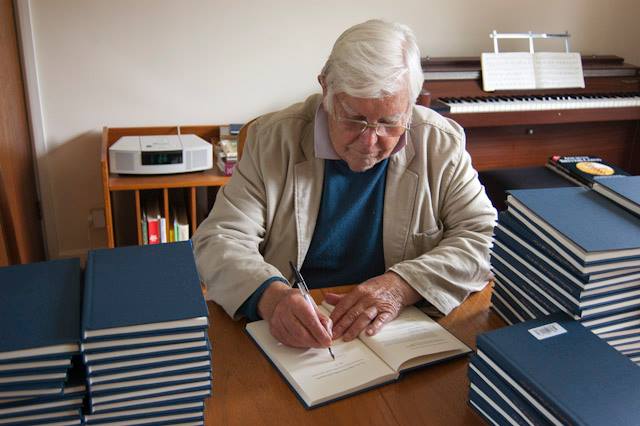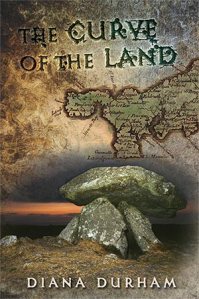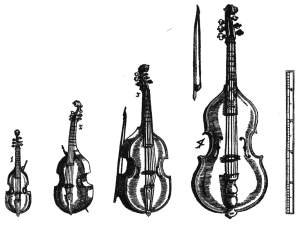 As a cellist and guitarist I have always thought the perfect instrument to be the Viola da Gama, a gut-fretted instrument tuned like a guitar but played like a cello. As with most aficionados my introduction to the instrument came through the 1991 French film, Tous Les Matins du Monde, which introduced two famous Gambist composers to the general public, Jean de Sainte-Colombe and Marin Marais. The soundtrack to that film still serves as a beautiful introduction to the solo repertoire – but the instrument had quite a storied and uniquely English period before that. I have been academically aware of the Viol Consort music of the Tudor court composers but could never find recordings or a means to sample them. Thanks to recent developments in the Early Music movement, ensembles like Fretwork and the emergence of YouTube – all that has changed. In early 2015 I listened to nothing but Viol Consort music for about 2 months, working my way my way through all the recordings I could find by such composers as William Byrd, Orlando Gibbons, John Jenkins, William Lawes, Matthew Locke and Christopher Tye. It’s hard to put into words the effect this music had but I found it deeply contemplative, almost timeless, to the point where no other music seemed to exist. There was just something about the drone quality of several viols played together, the way the intervals and cadences seem to hover and glide tectonically – gravitational and infinitely pleasing. It was a period of great musical flowering in England, an era of vastly interesting composers (William Lawes died tragically while fighting in the English civil war), with rooms throbbing with sonic and spiritual gravitas.
As a cellist and guitarist I have always thought the perfect instrument to be the Viola da Gama, a gut-fretted instrument tuned like a guitar but played like a cello. As with most aficionados my introduction to the instrument came through the 1991 French film, Tous Les Matins du Monde, which introduced two famous Gambist composers to the general public, Jean de Sainte-Colombe and Marin Marais. The soundtrack to that film still serves as a beautiful introduction to the solo repertoire – but the instrument had quite a storied and uniquely English period before that. I have been academically aware of the Viol Consort music of the Tudor court composers but could never find recordings or a means to sample them. Thanks to recent developments in the Early Music movement, ensembles like Fretwork and the emergence of YouTube – all that has changed. In early 2015 I listened to nothing but Viol Consort music for about 2 months, working my way my way through all the recordings I could find by such composers as William Byrd, Orlando Gibbons, John Jenkins, William Lawes, Matthew Locke and Christopher Tye. It’s hard to put into words the effect this music had but I found it deeply contemplative, almost timeless, to the point where no other music seemed to exist. There was just something about the drone quality of several viols played together, the way the intervals and cadences seem to hover and glide tectonically – gravitational and infinitely pleasing. It was a period of great musical flowering in England, an era of vastly interesting composers (William Lawes died tragically while fighting in the English civil war), with rooms throbbing with sonic and spiritual gravitas.
But first, a general introduction the viola da gamba is in order (quoted from http://beth.marmorstein.org)
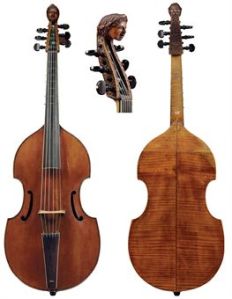 The viol originated in Spain, but was later introduced in Italy, where it was developed and improved. From Italy it gained popularity and was spread to the rest of Europe. Viols first reached England sometime in the early 16th century, the first two viols being employed as a part of the royal court during the reign of Henry VIII. Over the course of Henry VIII’s reign, the role of the viols in the English royal court grew to include 25 instruments and at least 8 musicians. The music played by viol consorts in this period was generally not written specifically for the viol, but rather consisted of short, textless, polyphonic consorts written without any instrumental specifications. Unfortunately, very little of this music has survived. At first, most of the court viol players were born and trained in Italy, or elsewhere in Europe, but in the early 1540’s native Englishmen and Scotsmen began to take up the viol. As the viol gained prominence in the royal court, viols also began to appear in private households, primarily among the nobility, who were anxious to keep up with the tastes of the crown. These private households drew musicians from several sources: some instructed their servants to learn to play the viol, some apprenticed local musicians, and some recruited foreigners. At the same time, the viol began to be considered an instrument well suited to teaching children. The concerts given by children in schools such as St Paul’s and Westminister exposed the viol to a much wider audience. During this period, English composers began to write music for viols specifically, possibly due to the demand for viol music created by choirboys and their masters. As the years passed, viols were used more and more in theatrical presentations by choirboy companies and soon began to be used by adult companies as well, providing incidental music for dumb shows between acts or during important moments during the drama. This use of viols in theatrical productions contributed to the introduction of the viol to many remote locations. As these choirboys grew up and dispersed to various colleges, careers, and private households, they contributed to the adoption of viol playing by amateurs and the instruction of children in private households, who then in turn provided an appreciative audience for new developments in viol consort music in the early 17th century…
The viol originated in Spain, but was later introduced in Italy, where it was developed and improved. From Italy it gained popularity and was spread to the rest of Europe. Viols first reached England sometime in the early 16th century, the first two viols being employed as a part of the royal court during the reign of Henry VIII. Over the course of Henry VIII’s reign, the role of the viols in the English royal court grew to include 25 instruments and at least 8 musicians. The music played by viol consorts in this period was generally not written specifically for the viol, but rather consisted of short, textless, polyphonic consorts written without any instrumental specifications. Unfortunately, very little of this music has survived. At first, most of the court viol players were born and trained in Italy, or elsewhere in Europe, but in the early 1540’s native Englishmen and Scotsmen began to take up the viol. As the viol gained prominence in the royal court, viols also began to appear in private households, primarily among the nobility, who were anxious to keep up with the tastes of the crown. These private households drew musicians from several sources: some instructed their servants to learn to play the viol, some apprenticed local musicians, and some recruited foreigners. At the same time, the viol began to be considered an instrument well suited to teaching children. The concerts given by children in schools such as St Paul’s and Westminister exposed the viol to a much wider audience. During this period, English composers began to write music for viols specifically, possibly due to the demand for viol music created by choirboys and their masters. As the years passed, viols were used more and more in theatrical presentations by choirboy companies and soon began to be used by adult companies as well, providing incidental music for dumb shows between acts or during important moments during the drama. This use of viols in theatrical productions contributed to the introduction of the viol to many remote locations. As these choirboys grew up and dispersed to various colleges, careers, and private households, they contributed to the adoption of viol playing by amateurs and the instruction of children in private households, who then in turn provided an appreciative audience for new developments in viol consort music in the early 17th century…
(The rest of the article can be found here)
There have been many interesting and sweeping periods of English music, including a couple of well-known ‘invasions’ of our own time. Just as we English took the Blues, repackaged it, and sold it back to the US – so too did we piece together consort music from European sources and popularised it in a new and interesting context. Here is a brief introduction to elements of consort music from the website http://www.hoasm.org:
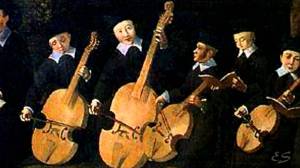 The instrumental ensembles of the late sixteenth and early seventeenth centuries were called in England ‘consorts’, a misspelling of ‘concert’ which, like ‘concerto’, probably comes from the Latin verb consererewith its past participle consertus, meaning ‘to combine together’. Consorts were either ‘whole’ or ‘broken,’ the former and by far the most popular consisting of members of the same family, as ‘consort of viols’ or ‘consort of recorders’, and the latter of various instruments, as in Morley’s Booke of Consort Lessons (1599), which is ‘scored’ for treble and bass viols, flute (=recorder), lute, cittern, and pandora. The practice of playing in ‘whole consort’ began in fact in the latter part of the fifteenth century, but this did not become widespread until the following century. Most consort music is for treble, alto, tenor, and bass viols, and the two main types of composition are the fantasia, and that based on a cantus firmus. Of the latter the In nomines easily exceed not only other cantus firmus pieces, but also the number of In nomines written for the keyboard or lute , the reason being that this type of composition is a fundamentally polyphonic one, and hence lends itself more naturally to, and indeed sounds better on, a group of strings than on a single instrument, even an organ. Polyphony, in fact, is a far more essential constituent of extended string writing (as Haydn discovered after he had written a number of string quartets) than any other class of vocal or instrumental composition, because, being completely abstract (i.e. no words) and with only a limited range of timbre, the ear requires more than just accompanied melody, although this is perfectly satisfactory in short pieces, such as dance movements. This fact also explains the greater number of fantasias for strings than for keyboard or lute, because the. fantasia consists, in the main, of imitative polyphony and, like the cantus-firmus type, usually differs little in technique and style from the contemporary motet or madrigal. In some of the later fantasias, however, especially those of Gibbons–the greatest master of this type of composition–the writing is decidedly instrumental in character, with rapid, repeated notes and wide leaps, and with more complex cross-rhythms and frequent use of sequence than in any vocal music of the time… (The rest of the article can be found here)
The instrumental ensembles of the late sixteenth and early seventeenth centuries were called in England ‘consorts’, a misspelling of ‘concert’ which, like ‘concerto’, probably comes from the Latin verb consererewith its past participle consertus, meaning ‘to combine together’. Consorts were either ‘whole’ or ‘broken,’ the former and by far the most popular consisting of members of the same family, as ‘consort of viols’ or ‘consort of recorders’, and the latter of various instruments, as in Morley’s Booke of Consort Lessons (1599), which is ‘scored’ for treble and bass viols, flute (=recorder), lute, cittern, and pandora. The practice of playing in ‘whole consort’ began in fact in the latter part of the fifteenth century, but this did not become widespread until the following century. Most consort music is for treble, alto, tenor, and bass viols, and the two main types of composition are the fantasia, and that based on a cantus firmus. Of the latter the In nomines easily exceed not only other cantus firmus pieces, but also the number of In nomines written for the keyboard or lute , the reason being that this type of composition is a fundamentally polyphonic one, and hence lends itself more naturally to, and indeed sounds better on, a group of strings than on a single instrument, even an organ. Polyphony, in fact, is a far more essential constituent of extended string writing (as Haydn discovered after he had written a number of string quartets) than any other class of vocal or instrumental composition, because, being completely abstract (i.e. no words) and with only a limited range of timbre, the ear requires more than just accompanied melody, although this is perfectly satisfactory in short pieces, such as dance movements. This fact also explains the greater number of fantasias for strings than for keyboard or lute, because the. fantasia consists, in the main, of imitative polyphony and, like the cantus-firmus type, usually differs little in technique and style from the contemporary motet or madrigal. In some of the later fantasias, however, especially those of Gibbons–the greatest master of this type of composition–the writing is decidedly instrumental in character, with rapid, repeated notes and wide leaps, and with more complex cross-rhythms and frequent use of sequence than in any vocal music of the time… (The rest of the article can be found here)
Thankfully, more and more of the viol consort repertoire is becoming available. A short introduction can be found at http://www.earlymusicworld.com:
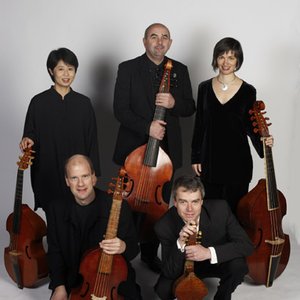 One thing we can say with certainty is that the repertoire is more extensive than we might imagine from the designated music for viol consort that survives, given that much of what we today consider as the great consort repertoire had still to be written – the works of such as Gibbons, as Jenkins, William Lawes, Locke and of course Purcell all lay in the future. In fact the foundation of the viol consort repertoire existed not in works composed especially for it, but in the rich tradition of contrapuntal vocal music that lay waiting for transposition by consorts. This debt to vocal music would play an enduring role long after composers moved beyond simple transposition to parody or reworked versions of vocal compositions and examples of it can be found in such works as Tallis’ 3-part Salvator mundi or some of the many transcriptions of Italian madrigals and motets made by Bologna-born Alfonso Ferrabosco the elder (1543-1588), who arrived and England in 1562 and served at the court of Elizabeth I for nearly twenty years…
One thing we can say with certainty is that the repertoire is more extensive than we might imagine from the designated music for viol consort that survives, given that much of what we today consider as the great consort repertoire had still to be written – the works of such as Gibbons, as Jenkins, William Lawes, Locke and of course Purcell all lay in the future. In fact the foundation of the viol consort repertoire existed not in works composed especially for it, but in the rich tradition of contrapuntal vocal music that lay waiting for transposition by consorts. This debt to vocal music would play an enduring role long after composers moved beyond simple transposition to parody or reworked versions of vocal compositions and examples of it can be found in such works as Tallis’ 3-part Salvator mundi or some of the many transcriptions of Italian madrigals and motets made by Bologna-born Alfonso Ferrabosco the elder (1543-1588), who arrived and England in 1562 and served at the court of Elizabeth I for nearly twenty years…
(The rest of the article can be found here)
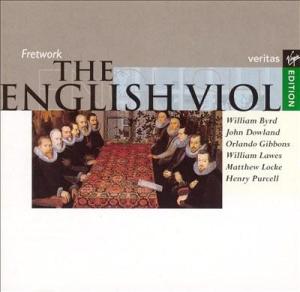 Of course, listening to low resolution recordings on YouTube gets old after a while – and amassing any sort of CD collection will quickly run into the hundreds. A good place to start is simply to acquire a few sample recordings by ensembles committed to making period music more available, like Fretwork. The English Viol and Heart’s Ease are wonderful introductory CDs that include consort works by the top composers of the period. I just hope your listening experience is as deep and rewarding as mine.
Of course, listening to low resolution recordings on YouTube gets old after a while – and amassing any sort of CD collection will quickly run into the hundreds. A good place to start is simply to acquire a few sample recordings by ensembles committed to making period music more available, like Fretwork. The English Viol and Heart’s Ease are wonderful introductory CDs that include consort works by the top composers of the period. I just hope your listening experience is as deep and rewarding as mine.
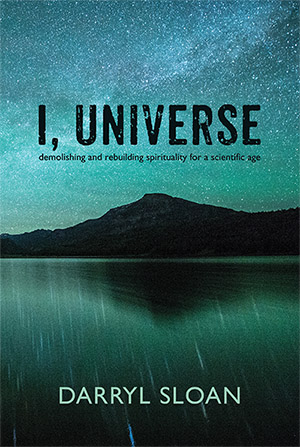 “The search for truth is not for everyone. It is not for those who accept without question the beliefs they inherited by accident of birth. It is not for those whose natural tendency is to mimic the thoughts and attitudes of their peers. It is not for those who are afraid to be different. It is not for those who need the approval of others to maintain their own happiness. It is not for those who only have ears for what makes them feel good. It is not for those who think they already know and need never change their minds. In short, it’s not for a lot of people….
“The search for truth is not for everyone. It is not for those who accept without question the beliefs they inherited by accident of birth. It is not for those whose natural tendency is to mimic the thoughts and attitudes of their peers. It is not for those who are afraid to be different. It is not for those who need the approval of others to maintain their own happiness. It is not for those who only have ears for what makes them feel good. It is not for those who think they already know and need never change their minds. In short, it’s not for a lot of people….

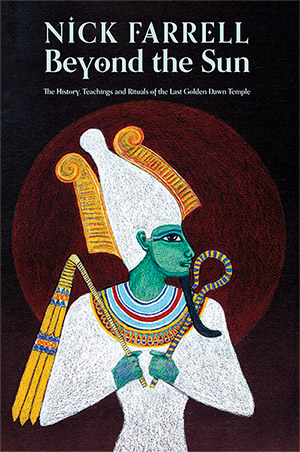 Nick Farrell is a prolific esoteric author and journalist who has dedicated his life to the Western Mystery Tradition. He joined the Builders of the Adytum in New Zealand at age 17 and then started to read everything he could find on the Golden Dawn and Magic, eventually moving to Hawkes Bay where he was trained by some of the elderly high-grade members of Whare Ra. He has since moved to Rome where he established a new international Golden Dawn Order, called the Magical Order of Aurora Aurea, which is dedicated to fusing a practical modern magical current to the Golden Dawn system. Among other works, he has written Magical Imagination: The Keys to Magic (also Skylight Press), King over the Water, Mathers’ Last Secret and Mathers’ Last Secret Revised. In this all-new reissue of Beyond the Sun: The History, Teachings and Rituals of the Last Golden Dawn Order, Farrell returns to the source.
Nick Farrell is a prolific esoteric author and journalist who has dedicated his life to the Western Mystery Tradition. He joined the Builders of the Adytum in New Zealand at age 17 and then started to read everything he could find on the Golden Dawn and Magic, eventually moving to Hawkes Bay where he was trained by some of the elderly high-grade members of Whare Ra. He has since moved to Rome where he established a new international Golden Dawn Order, called the Magical Order of Aurora Aurea, which is dedicated to fusing a practical modern magical current to the Golden Dawn system. Among other works, he has written Magical Imagination: The Keys to Magic (also Skylight Press), King over the Water, Mathers’ Last Secret and Mathers’ Last Secret Revised. In this all-new reissue of Beyond the Sun: The History, Teachings and Rituals of the Last Golden Dawn Order, Farrell returns to the source.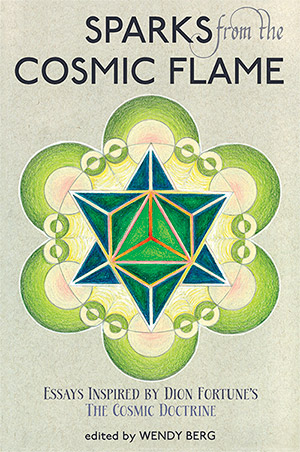 Dion Fortune’s The Cosmic Doctrine is a spiritual work that resulted from a psychic experiment between two friends in Glastonbury, 1923. It has since become one of the most important works in modern esoteric literature and a constant source of inspiration and instruction to many practitioners. Here is an excerpt from the original book jacket:
Dion Fortune’s The Cosmic Doctrine is a spiritual work that resulted from a psychic experiment between two friends in Glastonbury, 1923. It has since become one of the most important works in modern esoteric literature and a constant source of inspiration and instruction to many practitioners. Here is an excerpt from the original book jacket: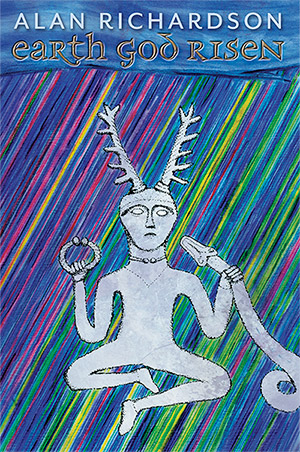 As a master story-teller and crafty novelist, Alan Richardson is the right voice to revisit the legend with its entwining tendrils of history and mythology. And this particular story becomes all the more prescient as it is told through a conversation between a seasoned magical sophist and his younger exuberant self. The result is a fascinating two-pronged, double lensed tome – but not without spontaneous wit and self-reflexive humour.
As a master story-teller and crafty novelist, Alan Richardson is the right voice to revisit the legend with its entwining tendrils of history and mythology. And this particular story becomes all the more prescient as it is told through a conversation between a seasoned magical sophist and his younger exuberant self. The result is a fascinating two-pronged, double lensed tome – but not without spontaneous wit and self-reflexive humour.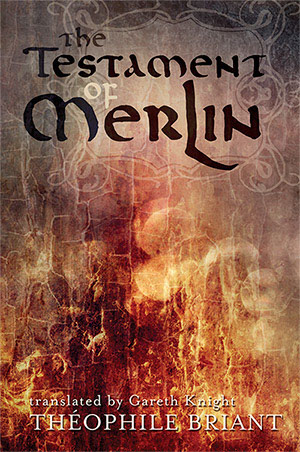 Myrddin is the beloved legendary wizard that has come down to us through the British and French Arthurian legends as well as a smattering of mediaeval Welsh poets. Amalgamated from these many diverse strands, he stands before us as a completed figure in Geoffrey of Monmouth’s great 1136 work, Historia Regum Britanniae. But there are always more sources to explore, some of which are just being translated for wider consumption.
Myrddin is the beloved legendary wizard that has come down to us through the British and French Arthurian legends as well as a smattering of mediaeval Welsh poets. Amalgamated from these many diverse strands, he stands before us as a completed figure in Geoffrey of Monmouth’s great 1136 work, Historia Regum Britanniae. But there are always more sources to explore, some of which are just being translated for wider consumption. As a cellist and guitarist I have always thought the perfect instrument to be the Viola da Gama, a gut-fretted instrument tuned like a guitar but played like a cello. As with most aficionados my introduction to the instrument came through the 1991 French film, Tous Les Matins du Monde, which introduced two famous Gambist composers to the general public, Jean de Sainte-Colombe and Marin Marais. The soundtrack to that film still serves as a beautiful introduction to the solo repertoire – but the instrument had quite a storied and uniquely English period before that. I have been academically aware of the Viol Consort music of the Tudor court composers but could never find recordings or a means to sample them. Thanks to recent developments in the Early Music movement, ensembles like Fretwork and the emergence of YouTube – all that has changed. In early 2015 I listened to nothing but Viol Consort music for about 2 months, working my way my way through all the recordings I could find by such composers as William Byrd, Orlando Gibbons, John Jenkins, William Lawes, Matthew Locke and Christopher Tye. It’s hard to put into words the effect this music had but I found it deeply contemplative, almost timeless, to the point where no other music seemed to exist. There was just something about the drone quality of several viols played together, the way the intervals and cadences seem to hover and glide tectonically – gravitational and infinitely pleasing. It was a period of great musical flowering in England, an era of vastly interesting composers (William Lawes died tragically while fighting in the English civil war), with rooms throbbing with sonic and spiritual gravitas.
As a cellist and guitarist I have always thought the perfect instrument to be the Viola da Gama, a gut-fretted instrument tuned like a guitar but played like a cello. As with most aficionados my introduction to the instrument came through the 1991 French film, Tous Les Matins du Monde, which introduced two famous Gambist composers to the general public, Jean de Sainte-Colombe and Marin Marais. The soundtrack to that film still serves as a beautiful introduction to the solo repertoire – but the instrument had quite a storied and uniquely English period before that. I have been academically aware of the Viol Consort music of the Tudor court composers but could never find recordings or a means to sample them. Thanks to recent developments in the Early Music movement, ensembles like Fretwork and the emergence of YouTube – all that has changed. In early 2015 I listened to nothing but Viol Consort music for about 2 months, working my way my way through all the recordings I could find by such composers as William Byrd, Orlando Gibbons, John Jenkins, William Lawes, Matthew Locke and Christopher Tye. It’s hard to put into words the effect this music had but I found it deeply contemplative, almost timeless, to the point where no other music seemed to exist. There was just something about the drone quality of several viols played together, the way the intervals and cadences seem to hover and glide tectonically – gravitational and infinitely pleasing. It was a period of great musical flowering in England, an era of vastly interesting composers (William Lawes died tragically while fighting in the English civil war), with rooms throbbing with sonic and spiritual gravitas. The viol originated in Spain, but was later introduced in Italy, where it was developed and improved. From Italy it gained popularity and was spread to the rest of Europe. Viols first reached England sometime in the early 16th century, the first two viols being employed as a part of the royal court during the reign of Henry VIII. Over the course of Henry VIII’s reign, the role of the viols in the English royal court grew to include 25 instruments and at least 8 musicians. The music played by viol consorts in this period was generally not written specifically for the viol, but rather consisted of short, textless, polyphonic consorts written without any instrumental specifications. Unfortunately, very little of this music has survived. At first, most of the court viol players were born and trained in Italy, or elsewhere in Europe, but in the early 1540’s native Englishmen and Scotsmen began to take up the viol. As the viol gained prominence in the royal court, viols also began to appear in private households, primarily among the nobility, who were anxious to keep up with the tastes of the crown. These private households drew musicians from several sources: some instructed their servants to learn to play the viol, some apprenticed local musicians, and some recruited foreigners. At the same time, the viol began to be considered an instrument well suited to teaching children. The concerts given by children in schools such as St Paul’s and Westminister exposed the viol to a much wider audience. During this period, English composers began to write music for viols specifically, possibly due to the demand for viol music created by choirboys and their masters. As the years passed, viols were used more and more in theatrical presentations by choirboy companies and soon began to be used by adult companies as well, providing incidental music for dumb shows between acts or during important moments during the drama. This use of viols in theatrical productions contributed to the introduction of the viol to many remote locations. As these choirboys grew up and dispersed to various colleges, careers, and private households, they contributed to the adoption of viol playing by amateurs and the instruction of children in private households, who then in turn provided an appreciative audience for new developments in viol consort music in the early 17th century…
The viol originated in Spain, but was later introduced in Italy, where it was developed and improved. From Italy it gained popularity and was spread to the rest of Europe. Viols first reached England sometime in the early 16th century, the first two viols being employed as a part of the royal court during the reign of Henry VIII. Over the course of Henry VIII’s reign, the role of the viols in the English royal court grew to include 25 instruments and at least 8 musicians. The music played by viol consorts in this period was generally not written specifically for the viol, but rather consisted of short, textless, polyphonic consorts written without any instrumental specifications. Unfortunately, very little of this music has survived. At first, most of the court viol players were born and trained in Italy, or elsewhere in Europe, but in the early 1540’s native Englishmen and Scotsmen began to take up the viol. As the viol gained prominence in the royal court, viols also began to appear in private households, primarily among the nobility, who were anxious to keep up with the tastes of the crown. These private households drew musicians from several sources: some instructed their servants to learn to play the viol, some apprenticed local musicians, and some recruited foreigners. At the same time, the viol began to be considered an instrument well suited to teaching children. The concerts given by children in schools such as St Paul’s and Westminister exposed the viol to a much wider audience. During this period, English composers began to write music for viols specifically, possibly due to the demand for viol music created by choirboys and their masters. As the years passed, viols were used more and more in theatrical presentations by choirboy companies and soon began to be used by adult companies as well, providing incidental music for dumb shows between acts or during important moments during the drama. This use of viols in theatrical productions contributed to the introduction of the viol to many remote locations. As these choirboys grew up and dispersed to various colleges, careers, and private households, they contributed to the adoption of viol playing by amateurs and the instruction of children in private households, who then in turn provided an appreciative audience for new developments in viol consort music in the early 17th century… The instrumental ensembles of the late sixteenth and early seventeenth centuries were called in England ‘consorts’, a misspelling of ‘concert’ which, like ‘concerto’, probably comes from the Latin verb consererewith its past participle consertus, meaning ‘to combine together’. Consorts were either ‘whole’ or ‘broken,’ the former and by far the most popular consisting of members of the same family, as ‘consort of viols’ or ‘consort of recorders’, and the latter of various instruments, as in Morley’s Booke of Consort Lessons (1599), which is ‘scored’ for treble and bass viols, flute (=recorder), lute, cittern, and pandora. The practice of playing in ‘whole consort’ began in fact in the latter part of the fifteenth century, but this did not become widespread until the following century. Most consort music is for treble, alto, tenor, and bass viols, and the two main types of composition are the
The instrumental ensembles of the late sixteenth and early seventeenth centuries were called in England ‘consorts’, a misspelling of ‘concert’ which, like ‘concerto’, probably comes from the Latin verb consererewith its past participle consertus, meaning ‘to combine together’. Consorts were either ‘whole’ or ‘broken,’ the former and by far the most popular consisting of members of the same family, as ‘consort of viols’ or ‘consort of recorders’, and the latter of various instruments, as in Morley’s Booke of Consort Lessons (1599), which is ‘scored’ for treble and bass viols, flute (=recorder), lute, cittern, and pandora. The practice of playing in ‘whole consort’ began in fact in the latter part of the fifteenth century, but this did not become widespread until the following century. Most consort music is for treble, alto, tenor, and bass viols, and the two main types of composition are the  One thing we can say with certainty is that the repertoire is more extensive than we might imagine from the designated music for viol consort that survives, given that much of what we today consider as the great consort repertoire had still to be written – the works of such as Gibbons, as Jenkins, William Lawes, Locke and of course Purcell all lay in the future. In fact the foundation of the viol consort repertoire existed not in works composed especially for it, but in the rich tradition of contrapuntal vocal music that lay waiting for transposition by consorts. This debt to vocal music would play an enduring role long after composers moved beyond simple transposition to parody or reworked versions of vocal compositions and examples of it can be found in such works as Tallis’ 3-part Salvator mundi or some of the many transcriptions of Italian madrigals and motets made by Bologna-born Alfonso Ferrabosco the elder (1543-1588), who arrived and England in 1562 and served at the court of Elizabeth I for nearly twenty years…
One thing we can say with certainty is that the repertoire is more extensive than we might imagine from the designated music for viol consort that survives, given that much of what we today consider as the great consort repertoire had still to be written – the works of such as Gibbons, as Jenkins, William Lawes, Locke and of course Purcell all lay in the future. In fact the foundation of the viol consort repertoire existed not in works composed especially for it, but in the rich tradition of contrapuntal vocal music that lay waiting for transposition by consorts. This debt to vocal music would play an enduring role long after composers moved beyond simple transposition to parody or reworked versions of vocal compositions and examples of it can be found in such works as Tallis’ 3-part Salvator mundi or some of the many transcriptions of Italian madrigals and motets made by Bologna-born Alfonso Ferrabosco the elder (1543-1588), who arrived and England in 1562 and served at the court of Elizabeth I for nearly twenty years… Of course, listening to low resolution recordings on YouTube gets old after a while – and amassing any sort of CD collection will quickly run into the hundreds. A good place to start is simply to acquire a few sample recordings by ensembles committed to making period music more available, like Fretwork. The English Viol and Heart’s Ease are wonderful introductory CDs that include consort works by the top composers of the period. I just hope your listening experience is as deep and rewarding as mine.
Of course, listening to low resolution recordings on YouTube gets old after a while – and amassing any sort of CD collection will quickly run into the hundreds. A good place to start is simply to acquire a few sample recordings by ensembles committed to making period music more available, like Fretwork. The English Viol and Heart’s Ease are wonderful introductory CDs that include consort works by the top composers of the period. I just hope your listening experience is as deep and rewarding as mine. Like many bibliophiles I’m well acquainted with all the nooks and crannies by which one might come across used books at a bargain. Indeed, my house is well insulated with walls of books mostly found at jumble shops, thrift stores, garage sales, used bookshop bargain bins, library blow-outs and even the odd car boot sale. I frequent all the local grottos and scour boxes or shelves for the odd treasure, much of the time returning home empty-handed for all my craning and sifting. And I’ll be damned that in every single instance, without fail, I not only find one book by a certain Jan Karon – but a veritable slew of them. Who the hell is Jan Karon – and how bad must she be to have all these numerous tomes gumming up the used-book works?
Like many bibliophiles I’m well acquainted with all the nooks and crannies by which one might come across used books at a bargain. Indeed, my house is well insulated with walls of books mostly found at jumble shops, thrift stores, garage sales, used bookshop bargain bins, library blow-outs and even the odd car boot sale. I frequent all the local grottos and scour boxes or shelves for the odd treasure, much of the time returning home empty-handed for all my craning and sifting. And I’ll be damned that in every single instance, without fail, I not only find one book by a certain Jan Karon – but a veritable slew of them. Who the hell is Jan Karon – and how bad must she be to have all these numerous tomes gumming up the used-book works? Temporality is now more than ever the name of the game. Everything from your washing machine to your toaster to your car is manufactured to short-term specifications – and commercial book publishers have adopted the same ethos. We know that, of the above examples, Dan Brown’s Da Vinci Code was a top, top seller, literally churned out into the market place in 2003. It was then translated into 52 languages and garnered some hundred million sales within a couple of years, generating a little cottage industry of spin-offs and rebuttals along the way. This is the sort of ‘success’ that writers crave and yet it seems than many of his buyers decided to dump their copies, which are now vermin to resale shops. Of course, this is no skin off Mr. Brown’s nose as he’s already amassed a tidy fortune from the first-go-round sales. It’s fun to imagine that his readers, upon reading this mystery-spinner, found themselves agreeing with Stephen Fry’s damning edict that his writing is “arse-gravy of the worst kind” – but the truth is probably more mundane. Books, and particularly commercial novels, are now marketed toward a short-term explosion of interest followed by an abrupt death and discarding. They are designed to excite fever-pitch fervor – generate the quick-fire sale – but then end up in the same donation box as the failing toaster.
Temporality is now more than ever the name of the game. Everything from your washing machine to your toaster to your car is manufactured to short-term specifications – and commercial book publishers have adopted the same ethos. We know that, of the above examples, Dan Brown’s Da Vinci Code was a top, top seller, literally churned out into the market place in 2003. It was then translated into 52 languages and garnered some hundred million sales within a couple of years, generating a little cottage industry of spin-offs and rebuttals along the way. This is the sort of ‘success’ that writers crave and yet it seems than many of his buyers decided to dump their copies, which are now vermin to resale shops. Of course, this is no skin off Mr. Brown’s nose as he’s already amassed a tidy fortune from the first-go-round sales. It’s fun to imagine that his readers, upon reading this mystery-spinner, found themselves agreeing with Stephen Fry’s damning edict that his writing is “arse-gravy of the worst kind” – but the truth is probably more mundane. Books, and particularly commercial novels, are now marketed toward a short-term explosion of interest followed by an abrupt death and discarding. They are designed to excite fever-pitch fervor – generate the quick-fire sale – but then end up in the same donation box as the failing toaster.